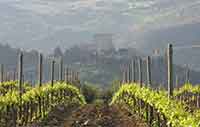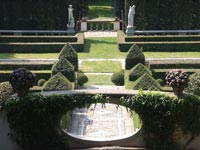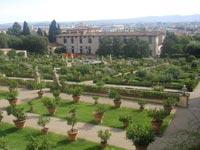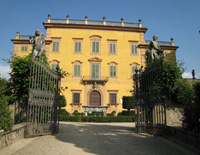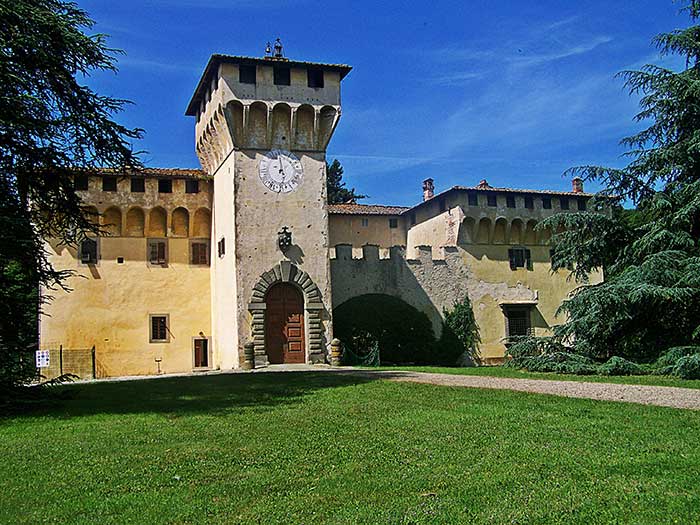 |
| |
Villa Medici at Cafaggiolo |
|
|
||
|
||
|
||
|
||
|
||
|
||
|
||
|
||
The ultimate Italy Villa Rental. Podere Santa Pia, a formal cloister in the Tuscan Maremma with a view made in heaven is the perfect holiday resort for relaxing and enjoying the splendor of the Maremma hills of southern Tuscany. Artist and writer's residency | Holiday houses in Tuscany | Podere Santa Pia |
||||
| Wine regions | Podere Santa Pia |
Podere Santa Pia, view from the garden on the valley below |
||
Villa I Tatti |
Parco di Villa Reale di Castello (Villa di Castello) in Florence |
|||
Monte Oliveto Maggiore abbey |
Abbey of Sant 'Antimo |
Villa La Pietra, near Florence |
||
| Medicean places in the Mugello territory The Mugello territory was very much loved by the Medici family, whose roots seem to lie in Campiano, a hamlet in the Municipality of Barberino di Mugello. The Medici family has left Mugello with numerous traces of a power that united economic and political expansion to the most innovative forms of artistic expression. They are not merely the result of an enlightened patronage but part of a cultural context so accepted and widespread that they are also clearly visible in the geometrical division of the lands and the woods, in the rational canalisation of the waters, in the design and size of certain farm houses, manors and churches, and in the harmonious distribution of the settlements. It is a finely woven mesh that finds no interruption in continuity, and goes from its highest most specialized moments (like one of Donatello's or Michelozzo's works) to the more common ones, which pertain to everyone, and create “atmosphere”. The traveller is, therefore, invited to enter this world by whatever means he chooses, and to travel along the roads, now byways, that were visited by ancient times and travellers, to discover the monuments and outstanding artistic works, but also the lesser and often unacknowledged signs of this great civilization. The suggested route starts in Florence and moves along Via Bolognese up towards Mugello (Regional Road 65 to the Futa): at a distance of 15 kilometres we come to Pratolino. Here we find Medicean Park of Pratolino (Villa Demidoff), one of the first great 16th century traces of the Medici at the time of the Grand Duchy. Again, by way of Via Bolognese we reach San Piero a Sieve and then Scarperia, the Florentine “New Land” founded in the 14th century, where it is Vicari Palace. From Scarperia, we return to San Piero a Sieve where we can admire the Medici Fortress while walking around its ancient walls. By travelling up through a wide country road we reach the hills and heights of the Trebbio Castle. From the Trebbio, back onto the Bolognese road, on our way to Barberino di Mugello, we reach Villa di Cafaggiolo: it stands backed against the hills in the centre of meadows and fields that fall away to the Sieve river. In the near vicinity of Villa di Cafaggiolo stands our last sight: the Bosco ai Frati Convent is just a few kilometres off, along the road that goes to Panna-Galliano. The Medici estates The Medici family estates were concentrated mainly in the areas of San Piero a Sieve, Barberino and Scarperia. The area, along with its rich natural environment, provided a strong communications link with other areas. The transapennine route, for example, helped keep commercial relations between the Florentine plains and the Bolognese ones flourishing in Medieval times, thus providing the great family with profits and privileges. Whether we accept the theory that the great family's origins lie in the areas of the Cafaggiolo and Trebbio Castles, or whether we choose to believe that this “city-dwelling” family merely invested in the area, the fact remains that the growth of the properties around the two castles was constant and continuous, to the point that it would include a vast stretch of territory, both lands and real estate, in the most important centres of Barberino, San Piero a Sieve and Scarperia. The presence of the Medici family not only left numerous, important traces, but it also attracted many important Florentine families whose fortunes were linked to theirs, and merchants who, by following in their footsteps, had begun to buy property and goods in Mugello. In the course of the 15thcentury, the Giugni and Salviati families, for example, had set in motion a process of change in the Mugello landscape, and contributed in promulgating the tastes and character of the artistic works of the city (from architecture to paintings and sculptures), by employing the same craftsmen and workshops that had worked to enhance their city dwellings. This route will give the traveller a glimpse of the multihued and mannered world of the Medici, the cultural “climate” and the natural setting in which the Florentine aristocracy moved. The Medici Villa at Careggi Purchased in 1417 by Lorenzo di Giovanni di Bicci de’ Medici, the villa was enlarged around the mid 15th century on a project by Michelozzo di Bartolomeo on order of Cosimo the Elder who loved to spend time here tending the gardens, reading and playing chess. Characterised by a courtyard with a trapezoidal plan, the building was embellished by loggias which placed it in direct contact with the garden and the hilly landscape. Several descriptions of the garden dating to the time of Lorenzo the Magnificent lead us to hypothesise a layout divided into a part with flowers and fruit trees and another with evergreen plants, the so-called selvatico. The Villa at Careggi was for many years an extraordinarily important cultural centre which hosted, among others, Pico della Mirandola, Agnolo Poliziano and Marsilius Ficinus who here composed the De Vita. It was the seat of the Platonic Academy instituted by Ficinus in 1459 by order of Cosimo the Elder. The main task of the Academy was to attend to the study of the works of Plato and his followers, promoting their diffusion by translating them into Latin. The primary intent of the Academy was also to recover and promulgate ancient scientific texts. The affirmation of Platonism enacted by the academics, acknowledging a geometric and numerical foundation to reality, played a determining role in the evolution of the scientific debate which, by favouring the rediscovery of important mathematical, medical and naturalistic texts from the past, favoured the birth of modern science. These years witnessed, in particular, the recovery and diffusion of the works of Archimedes, the texts of Hippocrates and the writings of Pliny the Elder, of which the copies belonging to the Medici family are today conserved in the Biblioteca Medicea Laurenziana. The Academy’s activity reached its utmost development under the government of Lorenzo the Magnificent who was both a member and its protector. At the Magnificent’s death in 1492, Bernardo Rucellai hosted the Academy in his house, opening the Horti Oricellari to the meetings of its members. Following the death of Lorenzo, the property suffered a long period of abandon which ended when cardinal Carlo, as of 1615, began a series of works that sited rectangular flower-beds on the south side, embellishing them with box hedges, potted orange trees and fruit trees. Halfway through the 19th century, the Villa of Careggi became property of Englishman Francis Joseph Sloane, a geologist and scholar of natural sciences, who transformed the park according to the romantic style, enriching it with various exotic tree species still present today, such as the cedars of Lebanon and of the Himalayas, sequoias from California, strawberry trees from Greece and palm trees. This period was also marked by the construction of the lemon-house that conserves the old collection of citrus trees and many varieties of palm. In 1936, the villa was purchased by the Santa Maria Nuova Hospital of Florence which used it first as a nursing school, and then as administrative offices. Today it is the headquarters of the offices of Careggi Hospital. |
||||

